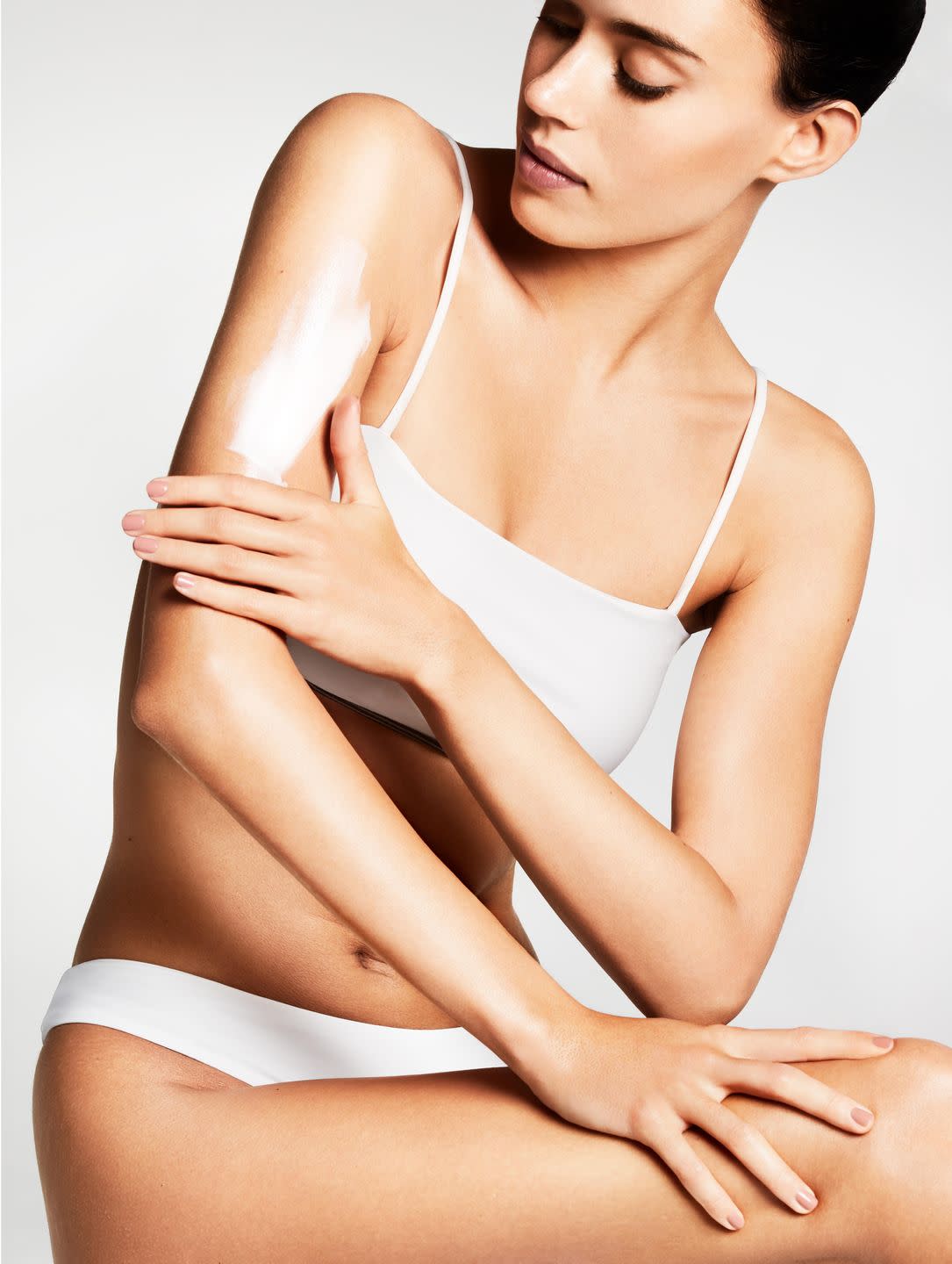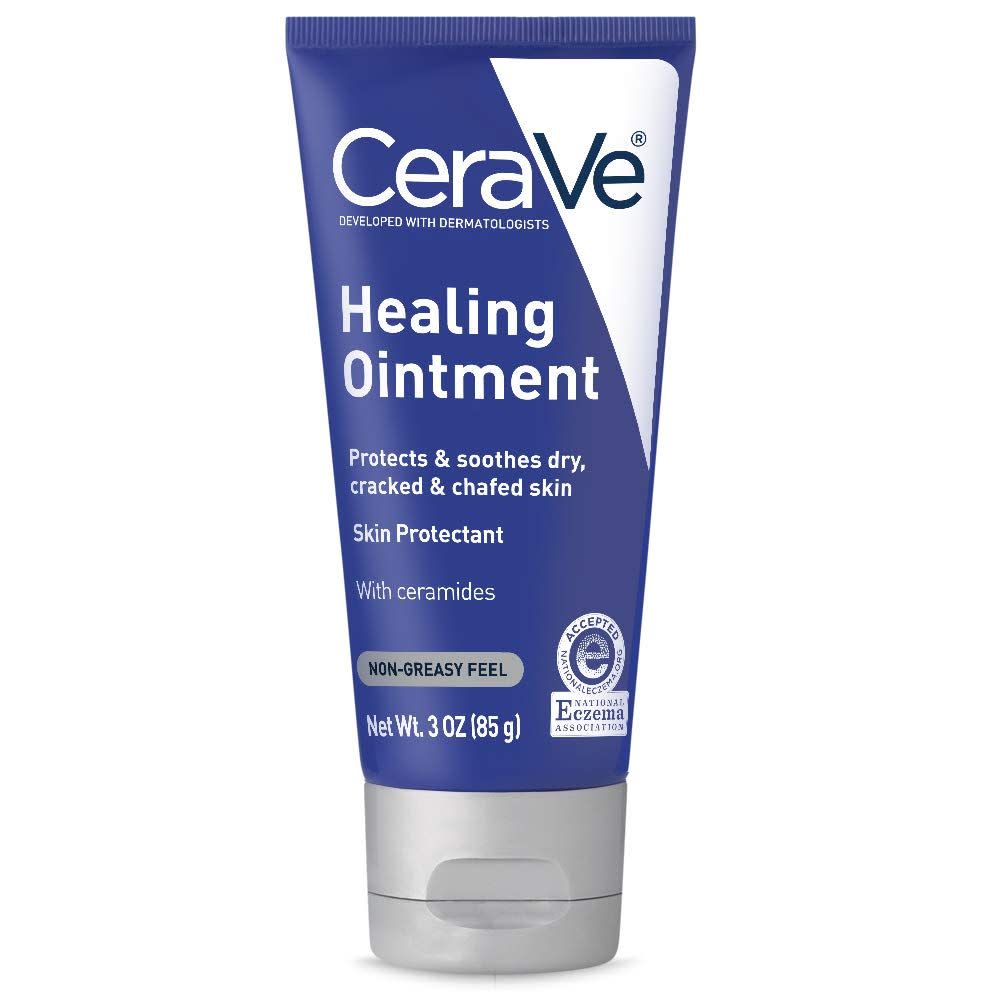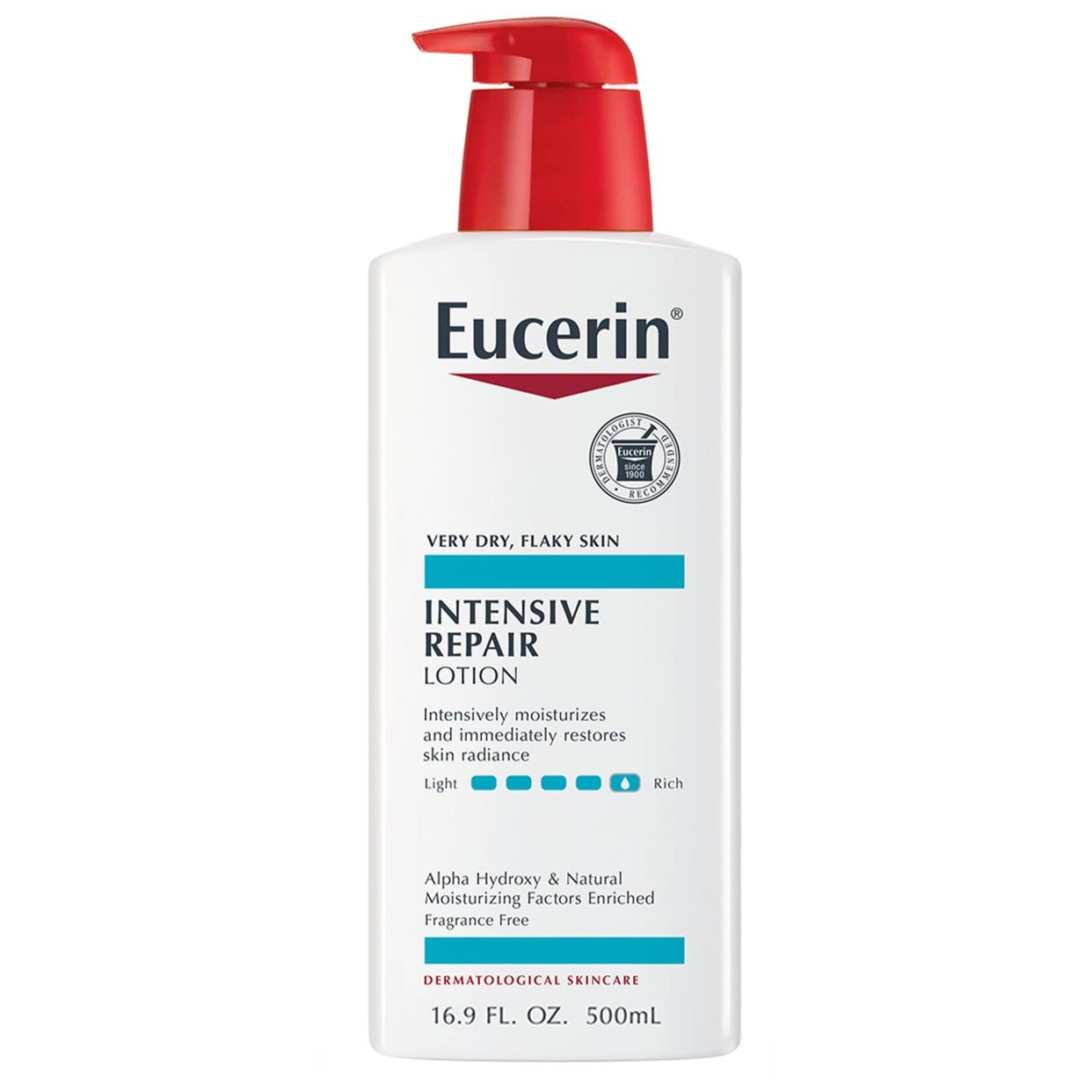31 Million Americans Deal With This Painful Skin Condition. Here's How To Treat It.
"Hearst Magazines and Yahoo may earn commission or revenue on some items through these links."
Natalie Arroyo Camacho was going about her day as usual, enjoying the warmth of early summer in July 2022, when she spotted something unusual on the palm of her right hand. To her surprise, the skin there was dry, intensely itchy, and irritated, nearing the point of raw.
For 28 years, Camacho had lived her life free of any serious skin issues, so she assumed this sudden dryness must be an allergic reaction brought on by a new scented hand soap. She threw away the suspected culprit and replaced it with an unscented alternative, expecting her skin to return to its normal hydrated state soon after.
When a similar dry patch appeared on the palm of her left hand a few weeks later, she knew more than just soap was to blame. Camacho thought she’d developed a new sensitivity to fragrance, so she combed through her entire personal care regimen, removing any scented lotions, oils, and body washes. Three months later, the dryness had not only not gone away, it had dramatically worsened. “My hands were severely cracked, to the point of being painful and sometimes even bleeding,” she recalls. “That's when I realized I had to do something about it.”
Camacho booked an appointment with her dermatologist, and within a few days, her fears were confirmed: the dry patches that had plagued her hands for months were not a temporary reaction to any particular product or ingredient but were, in fact, eczema flare-ups.
What is eczema?
Camacho discovered that she was one of about 31.6 million people in the U.S. who have some form of eczema, a broad term for a skin condition marked by redness, dryness, itching, and sometimes flaking. Eczema can appear in different forms and can be triggered or worsened by a variety of things, but the major commonality among all cases is the heavy physical and emotional toll it can wreak on those who struggle with it.
“Eczema is a condition where the skin barrier is not functioning optimally, leading to microscopic cracks in the outer skin layer and resulting dryness and inflammation,” says Joshua Zeichner, MD, director of cosmetic and clinical research in the department of dermatology at Mount Sinai Hospital in New York. While it typically develops during childhood and often goes away during puberty, eczema can appear at any age and may persist well into adulthood. Flare-ups can occur anywhere on the body but are most commonly found on the arms, legs, behind the knees, hands, and areas of the face, such as the eyelids and around the mouth.
What causes eczema?
Eczema is believed to have a strong genetic component, and there is often a family history of the condition among newly diagnosed cases. However, it can also be caused by environmental exposures. “Eczema is generally due to inflammation of the skin, but some triggers include dryness of the skin, stress, and if the skin comes into contact with something that can be irritating, such as harsh soaps, detergents, chemicals, or clothing with a rough texture such as wool,” says Marisa Garshick, MD, a clinical assistant professor of dermatology at Weill Cornell Medical Center. “For some people, intense heat and humidity can also cause flares.”
Exposure to cold, dry temperatures can also strip skin of essential oils and lead to barrier disruption and eczema.
What are the symptoms of eczema?
Eczema comes with rather debilitating symptoms. Regardless of when or where a flare-up appears, it’s usually characterized by red, flaky patches that itch significantly, as was the case with Camacho's skin. These patches can become dry and cracked, darkened, raw, marked by small bumps, or even oozing and crusty, depending on the severity of the case and whether it’s exacerbated by further irritants or by scratching. “In the most severe cases, eczema can actually affect large body surface areas and interfere with sleep,” Dr. Zeichner adds.
These symptoms can be incredibly painful for those living with the condition and can even result in a second set of symptoms, especially if it develops on an area that’s used a lot or regularly exposed to harsh environmental factors. “My eczema was agonizing. I realize that sounds dramatic, but it was so painful and so frequent that I almost couldn't do anything,” Camacho explains. “Because my eczema was on my hands, doing day-to-day chores was difficult since my palms would get irritated.”

What are the different types of eczema?
Atopic dermatitis is the most common form of eczema and is marked by red, dry, and itchy skin, which can happen in infants, children, and adults. “Atopic dermatitis can appear as pink, red, or brown scaly patches or plaques, areas of thickened skin, weeping or crusted areas, and generalized roughness of the skin,” says Dr. Garshick. “It is often itchy, and is commonly referred to as ‘the itch that rashes’ because it is thought that the rash appears as a result of scratching.” Atopic dermatitis typically has a genetic component and can be associated with asthma or allergies, and while its flare-ups can be treated and managed, it is generally considered a chronic condition.
Contact dermatitis is another prevalent form of eczema, which occurs when skin comes into contact with something that can trigger a reaction, be it an allergy or an irritation. It’s most associated with redness, flaking, and itching, but it can also include blisters, as can be seen with contact dermatitis caused by poison ivy. “While contact dermatitis can occur anywhere on the body, it typically develops at sites that specifically come into contact with an allergen or an irritant, with common areas being the eyes or hands,” Dr. Garshick adds.
Seborrheic dermatitis is another common form of eczema and typically appears in places where there are a lot of sebaceous glands, like the scalp, face, chest, and groin. “It can appear as dandruff, with flaking, or can be associated with redness and itching,” Dr. Garshich says. “While some of the treatment may be similar to other types of eczema, in that you use a topical steroid, it may also benefit from anti-fungal treatments, such as antifungal shampoos, to reduce the yeast which may be driving the process.”
Aside from the three most common types of eczema, there are others. They include neurodermatitis, which is classified by intense itching that can lead to changes in the skin, including thickening and discoloration. Dyshidrotic eczema, meanwhile, appears as little bubbles or blisters and mostly affects the hands and feet, especially among those which experience excessive sweating or are washed frequently. Nummular eczema often occurs where there is particularly dry skin and is associated with discoid, or circular, “coin-like” patches on the body. Finally, stasis dermatitis is a type of eczema that typically occurs on the lower legs as a result of poor circulation and can take the form of red, flaky, dry patches on the area.
How is eczema diagnosed?
Most people who experience eczema, whether for the first time or as an ongoing struggle, will try at-home remedies before consulting an expert. But “if the eczema is not improving, if it involves a large body surface area, of if it is impacting quality of life, including sleep, it's important to see a board-certified dermatologist to help with treatment,” Dr. Garshick says. From there, they will diagnose eczema based on clinical appearance, including what the rash looks like, where it is located, and the associated symptoms.
How is eczema treated?
One of the early stages of eczema treatment is to identify causes and triggers, like scented skincare products, too-long or too-hot showers, rough clothing, harsh laundry detergent, and more, and to eliminate any exposure to them. That alone could bring relief, but often, it takes adding skincare products specifically formulated to treat the condition for symptoms and flare-ups to actually go away.
“Flare-ups are often treated with topical steroid creams or non-steroid creams, while maintenance relies on caring for dry skin using gentle cleansers and moisturizers,” Dr. Garshick notes.
There's a wide range of over-the-counter topical products available for eczema, and most patients will need to try a few to see what works best for them. But Dr. Zeichner says a good rule of thumb is to “stick to products that contain ingredients like ceramides and colloidal oatmeal, which soothe and protect skin.”
Some of Dr. Zeichner's favorites include Eucerin Eczema Relief Cream, which is formulated with colloidal oatmeal and is great for both the face and body, and RoC Barrier Renew P.M. Moisturizer, which contains ceramides and lipopeptides that the dermatologist says act like spackle to fill in cracks between cells in the outer skin layer.
There are also prescription treatments, which can be helpful in more severe cases of eczema. These include topical steroids, non-steroid topicals like tacrolimus and eucrisa, oral medications like JAK inhibitors, and injectable medications like Dupilumab. “Flare-ups are often treated with topical steroid creams or non-steroid creams, while maintenance relies on caring for dry skin using gentle cleansers and moisturizers,” Dr. Garshick says.
Managing eczema and keeping flare-ups at bay also comes down to some environmental changes. “For those who suffer from eczema, it's recommended they take short lukewarm showers or baths only once daily, moisturize one to two times per day, especially upon getting out of the shower, and wear breathable fabrics that won't aggravate eczema or increase itchiness,” Dr. Garshick continues. “They can also benefit from improving moisture in the environment through the use of a humidifier.”
For Camacho, figuring out the best treatment for her eczema took trial and error. After removing scented products from her skincare routine to no real improvement, she started using a steroid cream formulated with triamcinolone, a topical ingredient known to relieve itching, redness, swelling, and discomfort. While the cream did stop her itching, Natalie’s eczema persisted, and it wasn’t until she discovered CeraVe’s Healing Ointment and the Eucerin Intensive Repair Lotion that she was able to make serious progress. “I saw results pretty early on—like week two—but it took more than a year of consistently using the CeraVe-Eucerin combo for me to see significant improvement,” she says. “Now, I can use the Eucerin just post-handwashing and only incorporate the CeraVe if my hands are especially dry.”

CeraVe Healing Ointment - Moisturizing Skin Protectant with Hyaluronic Acid & Ceramides, 3 Oz
amazon.com
$9.99

Eucerin Intensive Repair Body Lotion, Lotion for Very Dry Skin, 16.9 Fl Oz Pump Bottle
amazon.com
$10.12
Are there long-term side effects of eczema?
As if eczema flare-ups weren’t awful already, the condition can also present some troubling side effects. The symptoms themselves can lead to long-term pain and discomfort, which can impact day-to-day activity and quality of life and can result in difficulty with sleep due to persistent itching. “Eczema may also increase the chance of infection as a result of a weakened skin barrier and in the setting of scratching the skin,” Dr. Garshick notes.
Perhaps most notably, though, eczema can wreak a heavy toll emotionally, causing many who struggle with it to feel insecure and self-conscious. “I was super embarrassed by my eczema flare-ups because they were just plain unsightly,” Camacho remembers. “My friends would tease me all the time—which was all in good fun, of course, but still made me feel even more insecure about it.” Even now, a year and a half on, with her eczema all but non-existent, she gets PTSD just thinking about her ongoing, daily battle with the condition.
Can eczema be prevented?
While most eczema is thought to have some genetic component, even those predisposed to or susceptible to the condition can prevent flare-ups. The most important thing to do is keep skin moisturized and reduce dryness. “This can be done with frequent use of moisturizer, taking short showers once per day, avoiding harsh soaps or abrasive scrubs, and using a humidifier,” Dr. Garshick says. “And of course, those with eczema should avoid using products that contain a lot of fragrance irritating on the skin.”
You Might Also Like
